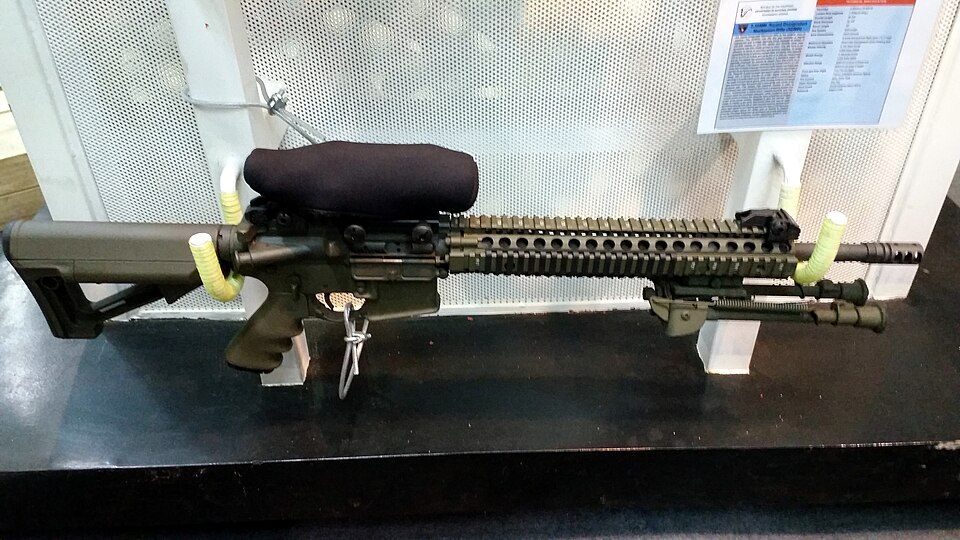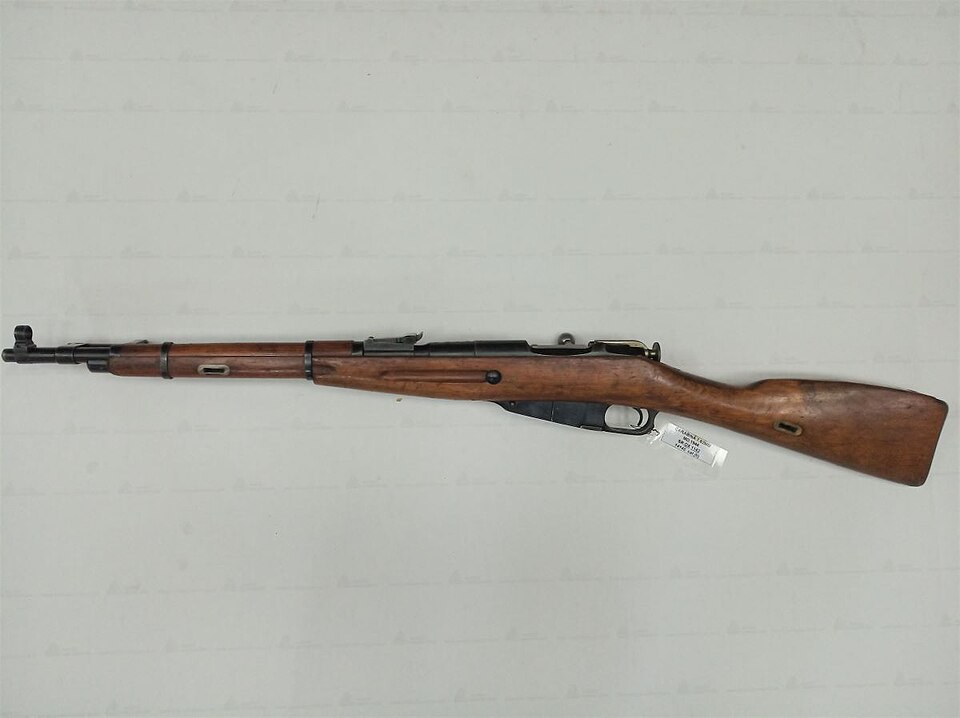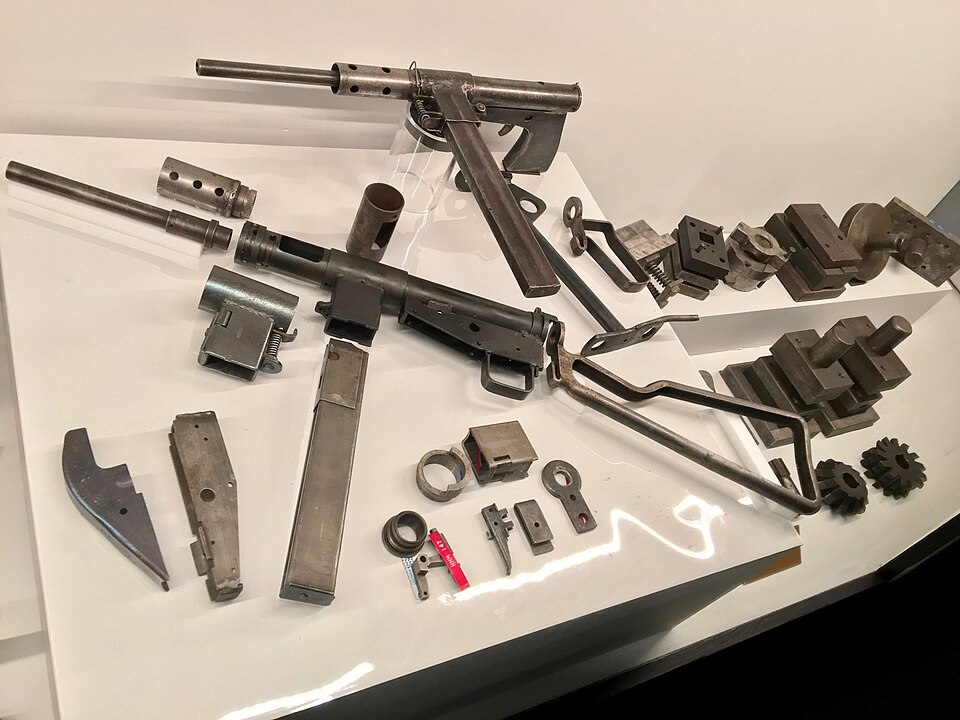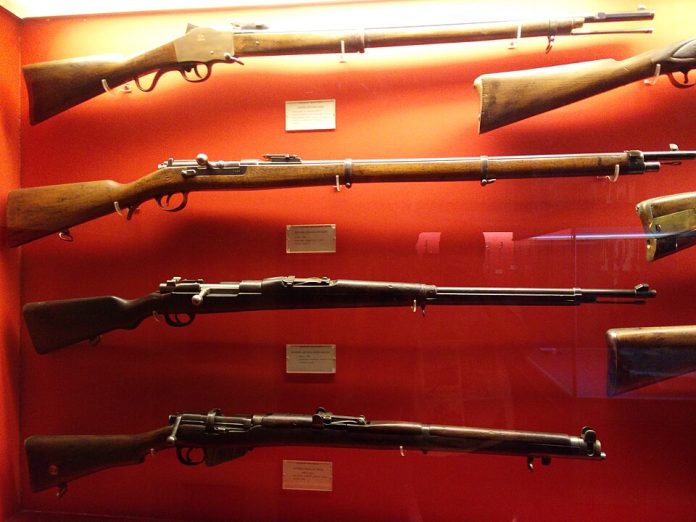
“Nyet” might be the shortest, coldest answer in the gun world and it sums up nicely the odds of seeing Russia’s new AK-308 on American soil. But between the relics of the Iron Curtain, modernized NATO-caliber battle rifles, and the shadowy rise of homemade 3D-printed weapons, the global arms scene is full of stories that combine engineering ingenuity with geopolitical intrigue.
From the Cold War-era Mosin-Nagants parading around Romania to the sleek export ambitions of Kalashnikov’s latest creation, each firearm tells a story of design philosophy, battlefield adaptation, and sometimes outright desperation. The crude, wire-stocked oddities that the police confiscate have their place, too, standing alongside factory-made legends and illicit DIY builds.
A rundown of nine standouts, from state arsenals to basements, that reflect the good, the bad, and the downright ugly of gun culture in today’s world.

1. The Basement-Built Slovakian Find
Discovered by Slovakian police, this homemade rifle looked like it belonged in a post-apocalyptic armorer’s workshop. Its collapsible wire stock and corncob forearm were eye-catching, but the real surprise was the careful milling on the receiver time-consuming work that still managed to produce a reliable action. The optic was a Warsaw Pact PU-style scope, the same kind fitted to WWII Mosin 91/30 sniper rifles, while the magazine came from a Czech CZ 452 .22LR. Crude yet functional, it’s a reminder that even improvised builds can echo the craftsmanship of Cold War-era designs.

2. Century’s Romarm Imports
Coming from east of Bratislava was a more finished product factory-produced WASR-10 underfolders and PSL designated marksman rifles out of Romania’s Cugir plant. These imports still kept their Warsaw Pact optics, sometimes maligned for their poor clarity, but retained that rugged reliability that made them such favorites among shooters who wanted the most genuine Eastern Bloc hardware. To collectors, they represent something of a bridge between Cold War surplus and modern semi-auto ownership.

3. Kalashnikov’s NATO-Caliber AK-308
First shown in 2018, the AK-308 married AK-103 and AK-12 DNA with a chambering in 7.62x51mm NATO. Recent updates, informed by Ukrainian combat lessons, include an extended forend for better grip, a foldable adjustable stock with cheek rest, and a Picatinny rail for modern optics. At 9.4 pounds and 34.7 inches collapsed, it’s about the same size as a stubby AR-10, but with Kalashnikov’s gas-operated reliability. Designed for export to countries aligning to NATO standards, it’s not likely to pop up in U.S. gun stores anytime soon.

4. Romanian Mosin-Nagants in Service
Romania’s Mosin-Nagant story stretches from captures during WWI to battlefield pickups during WWII to massive postwar Soviet aid. No army had ever seen such a range of submodels, origins, and modifications by the 1950s. Domestic production of M44 carbines at Cugir between the years 1953-55 added unique touches to these arms refined triggers and well-defined stock grooves. These rifles served both in the regular army and the Gărzile Patriotice militia and are inextricably linked to Romanian military history.

5. Instructie and Exercitiu Rifles
Cold War-era Romania so-marked certain Mosin-Nagants as Instructie (instructional) or Exercitiu (exercise). Instructie rifles, colorfully painted with a red stripe, were functional but reserved for training. The Exercitiu rifles, many with black-painted stocks, had firing pins clipped and were strictly not to fire at all. These, along with the occasional mysterious “F” suffixes, add some intrigue for collectors and word of caution for anyone considering firing them today.

6. The Gărzile Patriotice Militia
The Gărzile Patriotice was a civilian militia formed in 1968 by Nicolae Ceausescu as a deterrent against Soviet aggression and also to check the regular army. Armed initially with a mix of WWII weapons, including Mosin-Nagants, vz24 Mausers, and Orita submachine guns, they eventually standardized on Mosin-Nagants before transitioning to semi-auto AK variants such as the Romy G. The militia’s drills and tactics reflected both local defense and Cold War paranoia.

7. Rise of 3D-Printed Firearms
From novelty to viable weapons, 3D-printed firearms have come a long way since the release of the Liberator pistol files in 2013. Designs such as the hybrid FGC-9 use unregulated parts and hardware store materials to manufacture 9mm carbines capable of firing modern ammunition. With more than 2,100 designs available online, these weapons bypass traditional supply chains, testing the resolve of law enforcement in jurisdictions with strict gun control.

8. Extremist use of DIY guns
Right-wing extremists are increasingly using 3D-printed and homemade firearms for ideological, logistic, and financial reasons. In Australia, seven out of 27 extremist-related firearms cases since 2004 involved homemade weapons. Technical analysis of extremist manuals shows most instructions are accurate enough to produce lethal, if imperfect, firearms. This trend underscores the threat posed by easily shared digital blueprints.

9. Law Enforcement Challenges
Policing homemade firearms is complicated components are cheap, concealable, and often unserialized-thus difficult to trace. Blueprints can be downloaded anonymously, while parts are purchased via cryptocurrency, and weapons can be assembled close to intended targets. Officers lack training in how to identify them, and international cooperation is hindered by inconsistent reporting standards. In the words of one recommendation by Europol, a global network of 3DPF experts is now required.
From hand-fitted Cold War bolt actions to polymer-and-pipe carbines born in the shadows, the spectrum of global firearms design is as much about adaptation as it is innovation. Whether made by a state arsenal or a basement workshop, each weapon speaks of the circumstances-and sometimes desperation-of its maker. For enthusiasts and historians alike, these stories are a reminder that the good, the bad, and the ugly often share the same trigger guard.


